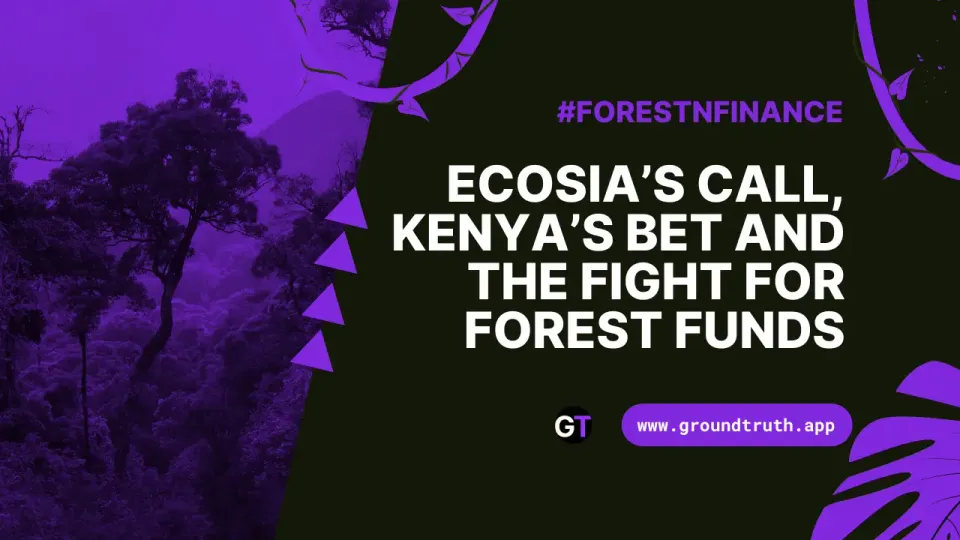Isometric’s New Carbon Removal Approach 🌲
Isometric is mixing new tech with old-school methods...

A Fresh Take on Monitoring Tree Carbon Credits📊
Isometric has released a new protocol for measuring and verifying carbon removal through reforestation, inviting feedback from the public. The protocol aims to streamline the process of tracking carbon captured by trees, with a focus on verifying actual carbon storage rather than projections. Isometric is mixing new tech with old-school methods to get a better look at how much carbon trees are really capturing and ensure that the carbon credits from these projects are based on real results.
Cutting Through the Carbon Confusion 🌍
Reforestation—planting trees to absorb CO₂—has big potential to help combat climate change. But, the tricky part is knowing if and when those trees are actually doing the work. Traditional methods for measuring this carbon capture are slow and complicated. Isometric’s new approach could change that, aiming to make it simpler to know if carbon credits are based on actual carbon being stored in forests, rather than future estimates. This transparency could make it easier for companies to invest in reforestation with confidence.
New Approach to Carbon Tracking 🔎
Isometric’s protocol introduces three key updates aimed at improving the measurement of carbon removal:
- Integrating Advanced Monitoring Tools 💻: By incorporating technologies like drones, satellite imagery, and AI, the protocol aims to improve the accuracy and efficiency of tracking carbon removal. This could potentially help streamline the data collection process and reduce the time needed for verifying carbon credits.
- Frequent Data Updates 📊: Traditional carbon projects often rely on static models that may not reflect current conditions. Isometric's protocol introduces a more dynamic approach, allowing for regular updates to estimates, which could provide a clearer view of the ongoing carbon removal from reforestation projects.
- Detailed Assessment of Side Effects 🔄: Reforestation projects can sometimes lead to unintended changes, such as increased emissions in nearby areas. Isometric’s protocol aims to better account for these “leakages” by using more region-specific data, providing a more comprehensive understanding of the overall impact.
Protocol for Field Measurements 🌳
For projects using in situ measurements, Isometric’s protocol outlines a process of:
- Measuring Trees Directly 📏: Projects set up fixed-radius plots throughout the area and measure tree size, like diameter at breast height (DBH). These measurements are then converted into biomass using specific equations.
- Using Proven Equations 📚: The protocol requires using allometric equations that match the forest type, with a preference for those from national inventories or established research.
- Ensuring Accuracy 📊: To keep estimates reliable, projects need enough plots to maintain a +/-10% accuracy margin, with a minimum of 30 plots. Measurements must be updated periodically throughout the project’s duration.
This method ensures that even when projects choose direct measurements, the results are consistent and scientifically grounded.
Making Reforestation Work Better 🌿
Isometric’s protocol could help reforestation projects by:
- Going Digital 💻: Using technology like drones and AI, projects can provide more accurate and up-to-date info about their carbon impact. This could save time and cut down on paperwork.
- Focusing on Real Impact 🔍: By only crediting carbon that’s already been absorbed, buyers know they’re paying for actual results, not just future promises. It’s like paying for a finished product rather than a work in progress.
- Customizing to Local Needs 🌎: Adjusting for regional differences makes sure that the carbon removal numbers reflect reality, whether a project is in the Amazon or the Alps.
Open Methodology🤝
Isometric is asking for feedback from anyone interested, from scientists to project developers. By sharing their approach, they’re hoping to get valuable insights and make the protocol even better. We left a few suggestions of our own.
Read the new methodology for yourself on Isometric's website. They have also committed to making all of their supporting evidence publicly available - in our view, this is a great fist step.




